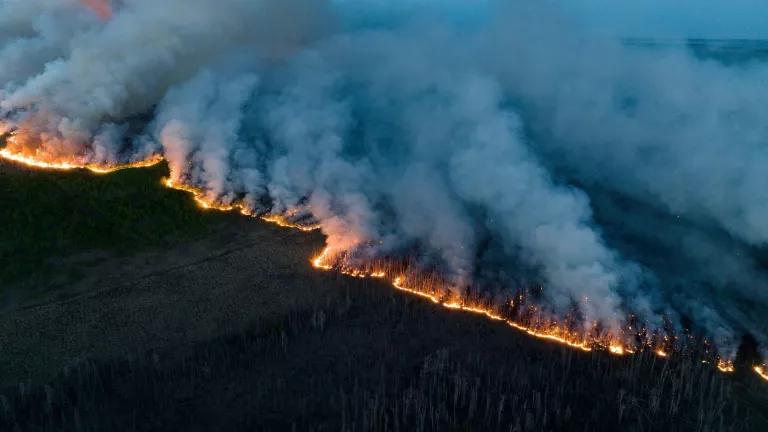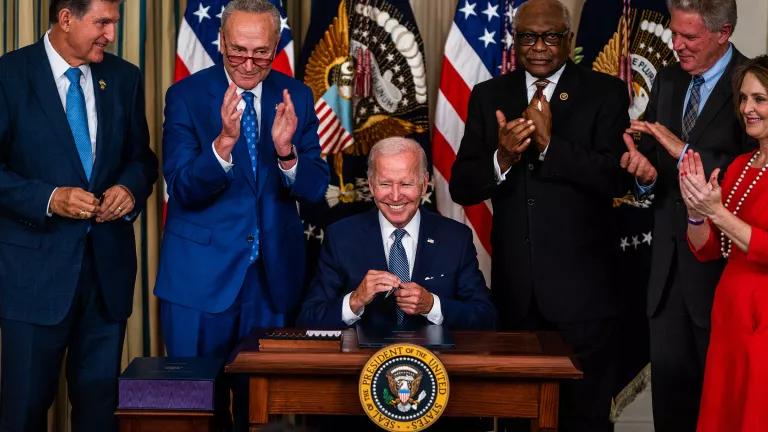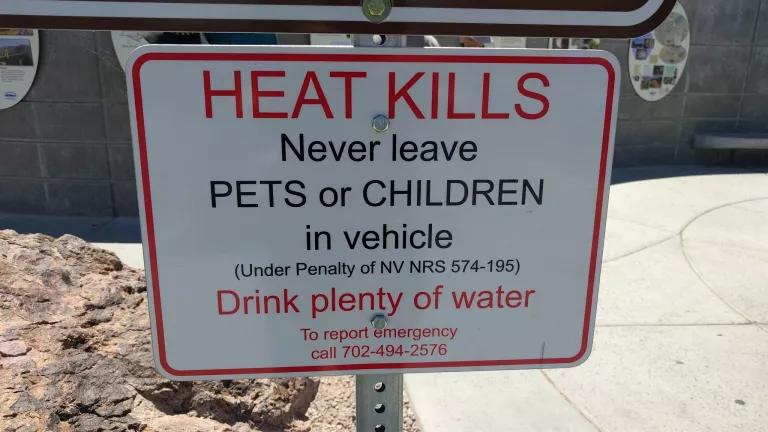Health on Center Stage in House Climate Crisis Action Plan
The House Climate Crisis Action Plan is a clear-eyed recognition of the need to address the present-day health harms of climate change.

On July 5, Tropical Storm Edouard became the earliest fifth named Atlantic storm on record
Public health professionals often lament that “virtually nobody notices” when they successfully protect people from illnesses, injuries and deaths. Preparing for health emergencies simply isn’t sexy—until something like the COVID-19 pandemic comes along.
Decades of underinvestment in our nation’s public health system has left agencies at all levels of government with insufficient tools to cope with these unprecedented times. And as if a rapid rise in COVID-19 cases wasn’t enough, this summer has already given us unhealthy heat across most of the country, record-breaking wildfires in Arizona, and five named tropical storms in the Atlantic.
Thankfully, the House Select Committee on the Climate Crisis has made public health and health infrastructure one of 12 pillars in its new Climate Crisis Action Plan. The plan, which was released last week, outlines important steps to boost America’s ability to cope with public health emergencies related to climate hazards such as extreme heat and deadly infectious diseases such as COVID-19.
Here’s how.
The Action Plan Emphasizes the Need for Preparedness at All Levels
The all-too-common approach to health crises in the United States is reactive rather than proactive, and it’s a recipe for higher costs, slower and more inconsistent responses, and unnecessary and profound loss of lives and livelihoods.
The House Action Plan recommends concrete ways to break free of that self-defeating pattern, including:
- Mandating climate adaptation planning in all federal agencies and departments. Most federal agencies haven’t touched their adaptation plans—if they have them at all—in the last four or five years. In the meantime, we’ve seen record-breaking heat, flooding, hurricanes, and wildfires harm the health of tens of thousands of U.S. residents, likely leading to billions of dollars in climate-related health costs. Updating plans will have far reaching benefits, including at the Department of Veterans Affairs, which provides healthcare to nearly 20 million military vets, and the U.S. Postal Service, which delivers critical medications and other health supplies directly to patients.
- Ensuring climate change is incorporated into hospital planning procedures and infrastructure projects. Despite the climate vulnerabilities of many hospitals, long-term care facilities, and other healthcare infrastructure, there is no federal requirement for healthcare providers or suppliers to incorporate projections of future climate conditions into their emergency planning. The Select Committee recommends directing the U.S. Department of Health and Human Services (HHS) to update the federal Emergency Preparedness Rule and to condition federal funding for healthcare construction, rebuilding, and retrofit projects on climate-smart standards.

Remains of the Adventist Feather River Hospital after the 2018 Camp Fire swept through Paradise, California
The Action Plan Calls for More Funding and Technical Support for Communities
Local public health agencies across America are underfunded and understaffed at the best of times. Smaller agencies, in particular, lack the technical capacity to cope with complicated health threats such as climate change.
Congress has a critical role in bolstering community resilience to climate-related health threats given that federal dollars make up roughly 30 to 40 percent of local health department budgets. Furthermore, federal funding can promote the kind of robust community engagement essential to ensuring more equitable health outcomes for communities of color, low-income communities, and other marginalized populations.
The House Action Plan recommends that Congress support community health through actions such as:
- Increasing funding for the U.S. Centers for Disease Control and Prevention’s (CDC) Climate and Health Program. The CDC provides direct financial support and technical assistance for climate and health adaptation planning, but only to 16 states and a handful of city, tribal, and territorial health departments. Furthermore, Trump has targeted the Climate and Health Program for elimination in his last three budget proposals.
- Expanding community-led and school-based efforts to promote mental health resilience. As the Select Committee points out, mental health “services” come from more than doctors and counselors. Teachers, coworkers, and other members of the broader community also help promote mental wellness. The Action Plan recommends HHS provide more funding, technical support, and coaching to local community groups that are vital partners to the clinical mental health system.
The Action Plan Reminds Us of the Need for Global Preparedness
Climate change, like COVID-19, is a global problem. The Select Committee calls on Congress to enhance U.S. participation in the World Health Organization (WHO), including by increasing funding and technical support for cooperative analysis of the threats of climate change to human health. A stronger global public health system will mean less stress on our national public health system, as climate change multiplies cross-border threats such as infectious diseases, wildfire smoke, and dust storms. Pulling out of WHO, which could officially happen a year from now, will leave us more insecure.

Won’t this all be terribly expensive? It’s worth remembering that public health spending across all levels of government totals to less than $290 per person per year. Compare that to household out-of-pocket health costs, at more than $1,160 per person in 2018, and all hospital care spending, at more than $3,700 per person. We can and should invest more in the public health strategies that help keep people from getting sick in the first place. But the Select Committee also recommends directing HHS to develop a comprehensive national strategy to deal with climate-related health threats. This would include a hard look at federal programming and funding priorities, to ensure we’re getting the most out of our federal public health dollars.
The Climate Crisis Action Plan is a clear-eyed recognition of the present-day health harms of climate change—and that efforts to make our public health system more resilient must move in parallel with cutting carbon pollution. It’s a refreshing departure from the cycle of neglect-panic-neglect our public health agencies and workers have been stuck in for so long. Now it’s up to the rest of Congress to heed the recommendations of the House Select Committee, and to center the health of their constituents for a brighter, more prosperous future.
For more on NRDC’s perspective on the Climate Crisis Action Plan:
- NRDC President Gina McCarthy’s statement, June 30, 2020
- Our Climate and Ocean in Crisis, June 30, 2020
- Bold Action to Save our Global Life Support System, June 30, 2020
- House Climate Plan Offers Bold Vision for the Future, July 1, 2020
- A Pivotal Moment for Sustainable Transportation, July 1, 2020
- House Climate Plan Takes Aim at Flooding and Sea Level Rise, July 1, 2020
- Three Key Takeaways from House Climate Crisis Action Plan, July 6, 2020
- House Climate Plan Calls for Community-Focused Adaptation, July 6, 2020
- House Climate Crisis Action Plan Gets a Lot Right on Biomass, July 9, 2020
- Public Lands Can Help Solve the Climate Crisis, July 14, 2020
- We Can Transform U.S. Energy, July 21, 2020




